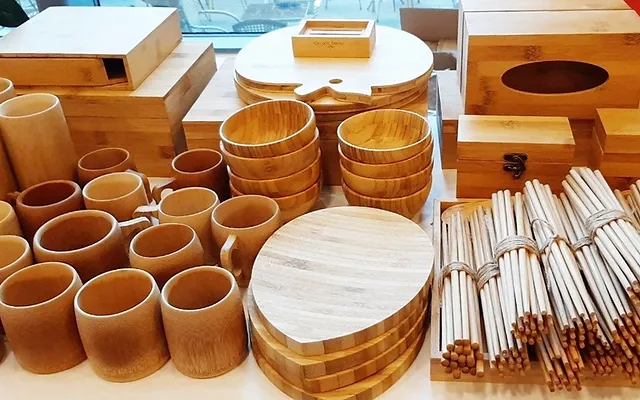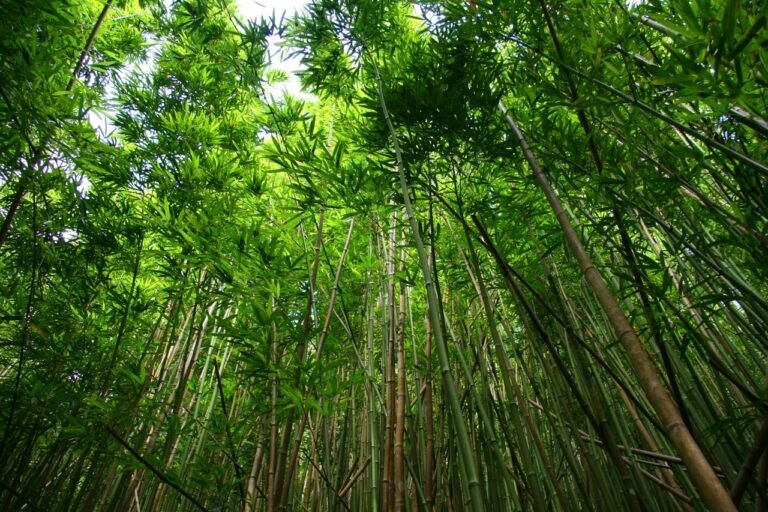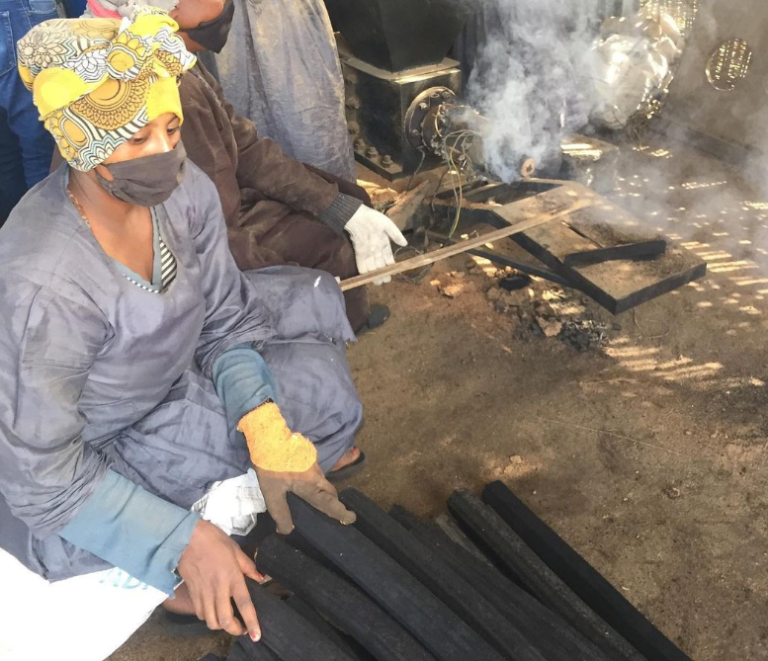Growing Bamboo In Shade: Tips And Tricks To Make It Possible!
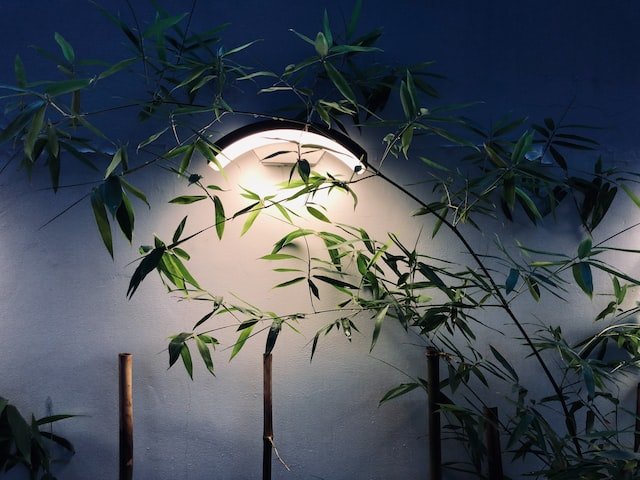
Welcome, all you green thumbs! If you want a low-maintenance, eye-catching addition to your shady garden, try planting bamboo! Several species of bamboo, which are often thought to need full light, are really very comfortable in somewhat shaded environments. Bamboo is an exotic and attractive plant that serves several purposes in the garden, such as a windbreak, privacy screen, and soil stabilizer. But, can you really grow bamboo in shade?
This blog will cover all you need to know about growing bamboo in shade, from which types work best to which pests and diseases to watch out for, to how to design a beautiful bamboo garden. Get your gardening tools, whether you’re an expert or a novice, and let’s explore the world of bamboo: a plant that thrives in the shadow!
How Does Shade Affect Plant Growth?
Shade may affect plant development positively or negatively, depending on its length, intensity, and species. Shade reduces a plant’s photosynthesis, which converts light energy into chemical energy for growth and development. Consequently, extended shadow reduces plant development and production.
Shade reduces transpiration and protects plants from heat and radiation. Some shade-tolerant plants may even grow better in partial shade than in the full sun.
Keep in mind that shade’s effects on plant development depend on each species’ demands. Some plants need full light, while others need some shade.
Growth Characteristics Of A Bamboo
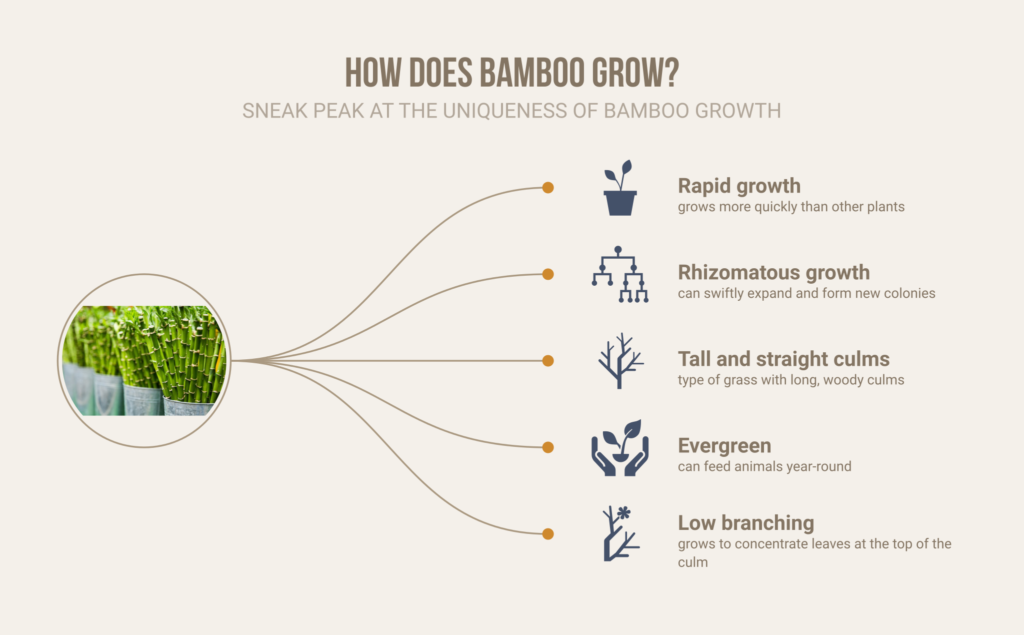
🟫 Rapid growth
Bamboo, a woody perennial grass, has an incomparable growth rate. It grows at different rates based on species and habitat. Certain bamboo species may grow 91 cm (36 inches) in a day under ideal circumstances.
Due to its hollow stem, jointed segments, and unusual root system, bamboo grows more quickly than other plants. The hollow stem transports water and nutrients quickly, while the jointed segments let the bamboo bend and swing in the wind without breaking. Bamboo’s broad and efficient root system helps it absorb water and nutrients from the soil better than other plants.
Bamboo is one of the most prolific crops due to its rapid growth. Unlike many other tree species, it matures in just a few years. Bamboo can trap more carbon dioxide than most other plants due to its fast growth, making it an excellent climate change solution.
🟫 Rhizomatous growth
Due to its rhizomes, bamboo grass grows quickly and effectively. Rhizomes produce new shoots as they develop horizontally underground.
Bamboo can swiftly expand and form new colonies. This makes it a good erosion control and soil stability plant. Bamboo helps decrease soil erosion and runoff when grown on hillsides.
Bamboo’s quick growth and thick root structure make it a good phytoremediation plant. It absorbs and degrades soil contaminants, helping the environment.
🟫 Tall and straight culms
Bamboo is a type of grass with long, woody culms. Several species have culms exceeding 30 meters (98 ft.) tall. Bamboo is one of the fastest-growing plants, with some varieties reaching 91 cm (36 inches) in a day.
Straight culms are unusual, but they also possess various benefits. They are useful for construction and other applications requiring straight, symmetrical poles.
Bamboo culms are utilized in buildings, bridges, and scaffolding due to their straightness and strength. Furniture, flooring, and other home products are also often made using them. Bamboo culms are lightweight and robust, making them a great alternative to wood and steel.
🟫 Evergreen
Most bamboo species are evergreen all year-round, which makes them unique. Bamboo relies on this adaptability to photosynthesize in low light and cold temperatures. Some plants may lose their leaves and become dormant in winter or in areas with fewer daylight hours. As bamboo is evergreen, photosynthesis enables it to grow and survive in harsh situations.
Evergreen bamboo also supports animals. It can feed animals year-round since it keeps its leaves. This helps sustain the ecosystem because it provides shelter and food for various animals.
🟫 Low branching
Bamboo has few branches, and it usually produces branches from its nodes, unlike trees, which grow branches from the trunk.
Bamboo grows to concentrate leaves at the top of the culm. The top of the culm gets leaves and branches while the bottom stays naked. That is why bamboo is easily identified by its unbranched look.
Bamboo’s unbranched look simplifies harvesting. The lowest half of the culm is frequently branch- and leaf-free, making harvesting easy. Unlike trees that contain branches and leaves that make harvesting harder.
🟫 Annual cycle
Bamboo grows annually, affected by seasonal variations. The shoots start the plant’s growth cycle in spring. Summer warmth and rain help these young shoots develop quickly. And the bamboo plant grows using the stored energy from the previous year.
When summer ends, bamboo shoots stiffen for winter. By autumn, the shoots are big and strong enough to survive the winter. The bamboo culms become dormant in winter, and the plant sends its energy to the rhizomes and roots, which are shielded from the cold.
Bamboo grows again in the spring as temperatures increase. The cycle restarts when new shoots grow from the plant’s rhizomes. The sensitive young shoots need a lot of energy from the plant to develop fast and robustly.
🟫 High biomass production
Bamboo’s unique traits make it a highly productive crop for sustainable agriculture and forestry. Its rapid expansion is significant because bamboo can maximize production on limited land.
Bamboo’s leaf area index also boosts productivity. Photosynthesis requires leaf area per ground area. Bamboo has a high leaf area index and can collect more sunlight and turn it into energy via photosynthesis, yielding more food and timber per unit area.
Bamboo’s thick culms also increase productivity. It can generate a lot of wood per unit area for building and other uses because of its high culm density.
Bamboo can feed people, trap carbon, and enhance soil health. It can absorb significant quantities of carbon dioxide from the atmosphere and prevent erosion with its extensive root system.
Can Bamboo Grow In The Shade?
Bamboo can thrive in shade, however, its tolerance varies by species. Some bamboo species flourish in complete shade, while others need sunshine.
Generally, bamboo thrives in bright, indirect sunlight. The Golden Goddess bamboo (Bambusa multiplex ‘Golden Goddess’) and Alphonse Karr bamboo (Bambusa multiplex ‘Alphonse Karr’) may grow well in full shade. These species are utilized as hedges or privacy plants in shaded locations.
Even shade-tolerant bamboo needs light to photosynthesize and create energy for growth. So, it’s crucial to pick the suitable species for your location’s shade and give proper maintenance, including watering, fertilizer, and soil management.
Types Of Bamboo That Grow Well In Shade
🟩 Sasa veitchii
Sasa veitchii bamboo is a low-growing and spreading plant. It’s a good option for shady gardens since it’s evergreen.
Sasa veitchii grows 2-3 feet tall and 4-6 feet wide. Its spreading growth makes it a good ground cover for big gardens. Broad, glossy green leaves with slightly serrated edges give texture and aesthetic appeal to the environment.
Sasa veitchii is hardy and may grow in sandy or clay soils. It favors well-drained, organic-rich soils. Its modest drought tolerance makes it a good option for gardens with irregular rainfall.
Sasa veitchii is widely utilized as a ground cover in gloomy places where grasses fail to grow. It makes a natural garden border, and it grows well in pots, making it ideal for patios and small gardens.
🟩 Semiarundinaria fastuosa
Semiarundinaria fastuosa, often known as “temple bamboo,” is a species of bamboo that may grow up to 30 feet tall. Its thick culms, or stems, are greenish-yellow and change color according to the season. Construction and other uses benefit from the culms’ glossy texture and durability.
Semiarundinaria fastuosa’s long, thin leaves may reach 10 inches in length, in addition to its height. With pointy points and tapering bases, the leaves are bright green and lanceolate. They alternate along the culms, giving the plant a feathery look.
Semiarundinaria fastuosa grows well in many situations. Shade-tolerant, it grows in sunny and somewhat shaded locations. But it may need shelter from severe winds, which may harm the fragile culms and leaves.
🟩 Pleioblastus variegatus
Pleioblastus variegatus, a versatile bamboo species, may give beauty to any garden or landscaping project. Many homeowners and landscapers choose this clumping bamboo variety owing to its simplicity of maintenance and adaptability.
Pleioblastus variegatus’ green-and-white-striped leaves are stunning. Thin, elongated, delicate leaves create a subtle yet striking contrast to any garden. This bamboo variety is perfect as a border plant or garden focal point due to its bushy, thick leaves.
Pleioblastus variegatus grows to 6 feet tall. It is ideal for tiny gardens and containers. It prefers moderate shade and is soil-tolerant. This makes it a great option for gardeners who want to add an appealing and intriguing feature to their landscape without much labor.
Pleioblastus variegatus is useful and attractive for homes and landscapers. Its clumping development prevents it from spreading. It is resilient and can survive cold and drought, making it a good option for gardens in many regions.
🟩 Fargesia robusta
Fargesia robusta, a 12-foot-tall clumping bamboo, is particularly popular nowadays. Long, slender green leaves gracefully fall down this bamboo species. Its robust culms, which are strong and break-resistant, are appreciated by many architectural designers.
This bamboo type thrives in partial shade and can survive colder conditions, making it a good option for chilly gardens. Well-drained clay, loam, and sandy soils are required for it to grow properly.
Fargesia robusta is a popular choice for privacy screens and windbreaks because of its thick leaves. It’s perfect for tropical or Asian-inspired decorative gardens.
🟩 Shibataea kumasaca
Dwarf bamboo, or Shibataea kumasaca, can beautify any garden or landscape. This bamboo is native to Japan and China and grows differently compared to other types of bamboo.
Shibataea kumasaca grows up to 3 feet, which is short for bamboo. It has 2″ leaves and 0.25″ culms, which are sensitive. Shibataea kumasaca thrives in partial shade, which is why it’s perfect for shaded garden settings. It also grows in sandy and clay soils.
Shibataea kumasaca is utilized as a ground cover or in containers due to its tiny size. Its delicate look adds texture and interest to rock gardens and garden beds. Its diminutive stature makes it ideal for compact areas with limited space.
How To Plant And Care For Bamboo In Shade

🟦 Choose the right bamboo variety
As mentioned, many bamboo species can grow in shade, although others have stronger adaptations to low light. Knowing bamboo species’ light needs will help you choose one for your yard.
Keep in mind that not all bamboo species are shade-tolerant. Certain types need more direct sunshine, while others cannot take strong sunlight. Research the bamboo type you wish to plant to evaluate its light needs and compatibility with your garden’s shadow to get the best results. In this way, you can choose a bamboo kind that thrives in your yard.
🟦 Planting
Drainage is crucial for planting bamboo. Bamboo loves well-drained soil. Waterlogging may cause root rot and other issues if the soil is overly compacted. To increase drainage, add sand, perlite, or other minerals to the soil.
Bamboo needs organic soil and sufficient drainage. It is a heavy feeder and needs plenty of nutrients to flourish. Compost, manure, or other organic substances may be needed to nourish the plant.
Bamboo also loves pH 5.5–6.5 soil. Alkaline or acidic soil may impair nutrition absorption, so before planting, assess and adjust the soil’s pH.
To allow bamboo to grow, dig a hole twice the root ball before planting. And to nourish the plant, enrich the soil with compost or other organic materials before planting. Slow-release fertilizer may help bamboo grow, so it’s better to have this before planting.
🟦 Watering
Bamboo thrives with continuous moisture. It needs constant watering, particularly in dry months. Moisture keeps the plant’s leaves, stems, and roots green, so deeply watering the plant ensures that your bamboo is growing properly.
Heavy watering also promotes deep root development, keeping bamboo healthy. Deep watering penetrates the soil and reaches the plant roots. This lets the plant absorb water and nutrients. Shallow watering causes roots to develop near the surface, making the plant more susceptible to drought and other environmental pressures.
Bamboo may wilt and perish if the soil dries up. A soaker hose or drip irrigation system can evenly water the plant to avoid this issue. Long, flexible soaker hoses gently release water throughout their length, and this ensures water distribution throughout the plant. A drip irrigation system also gently and evenly waters the plant, preventing overwatering and underwatering.
🟦 Mulching
Mulching plants with organic or inorganic debris helps control soil temperature, maintain moisture, and prevent weed development. Bamboo plants, which need continuous hydration and a moderate soil temperature, benefit from this method.
Use organic mulch like leaves, wood chips, or straw around bamboo plants. These items will decompose and enhance the soil. A 2-3-inch mulch cover provides the needed advantages without drowning the roots.
Avoid stacking mulch against the plant base because it creates a damp environment that encourages fungal development and decay. Instead, equally sprinkle mulch around the plant’s base, allowing a tiny space between the mulch and the stem for air circulation.
🟦 Fertilizing
Bamboo needs the appropriate nutrients at the right time to grow strong and healthy.
Balanced, slow-release fertilizer is excellent for bamboo plants. This fertilizer releases nutrients slowly, supporting plant growth throughout the season. This fertilizer should be used every spring while the plant is growing.
Liquid fertilizer every two to three weeks throughout the growing season may promote bamboo growth in addition to slow-release fertilizer. Liquid fertilizers are readily absorbed by plants and may give an instant boost of nutrients when needed. This is particularly useful during fast growth or plant stress.
It’s important to follow package recommendations when fertilizing bamboo. Over-fertilizing may cause excessive growth, weak stems, and other difficulties.
🟦 Pruning
Bamboo can spread quickly and become invasive if not managed properly. Regular pruning can help keep the plant under control and promote healthy growth. Remove any dead or damaged canes, and cut back any new shoots that are growing beyond the desired size. This will also help encourage the plant to produce new canes and keep it looking neat and tidy.
🟦 Controlling spread
Bamboo spreads rapidly through rhizomes. Bamboo spreads by producing new shoots from subterranean rhizomes. This may help bamboo thrive, but it can also make it hard to handle.
Take steps to stop bamboo from spreading. Bamboo may be container-grown, and you may admire this method without worrying about its proliferation. Bamboo root balls should fit in containers with appropriate sunshine and water.
You can also install a rhizome barrier. Plastic or metal rhizome barriers must be at least 2 feet deep and surround the bamboo plant. This prevents rhizomes from spreading. When planting bamboo, erect rhizome barriers at least 2 inches above ground level to prevent rhizomes from leaping over.
Even with a rhizome barrier, bamboo should be monitored for spreading. Rhizomes may grow beneath or around obstructions. Monitoring and upkeep can keep bamboo in its allotted region without leaping other plants in its surroundings.
You can also click here to reveal the complete guide!
Advantages Of Growing Bamboo In Shade
🟧 Tolerance to low light
Bamboo grows naturally in forest understories, where trees screen light. But bamboo can tolerate lesser light than other plants.
Bamboo does well in shade. Its photosynthetic structure lets it utilize light more effectively than other plants. Hence, bamboo thrives in low-light circumstances.
Bamboo growing in shade also tolerates adverse weather. Shade-grown bamboo resists high temperatures, low humidity, and strong winds. This is because the shade protects plants from direct sunlight, which may induce heat stress and dehydration.
🟧 Reduced water requirements
Shaded bamboo loses less water via evapotranspiration. Evapotranspiration occurs when the plant loses water via leaf evaporation and stomatal transpiration. This requires a plant to take up more soil water. That’s why in too dry or too rainy places, this might be problematic.
Because of decreased evapotranspiration, shade-grown bamboo needs less watering. This helps it preserve moisture and live in dry places. This makes shade-grown bamboo more drought-resistant than other plants.
🟧 Reduced maintenance
Bamboo grows quickly and is very resilient. Nevertheless, sunshine affects bamboo growth. Bamboo grows slowly in the shade because less sunshine causes less photosynthesis.
Shade-grown bamboo needs less upkeep since it grows slower. It may not need as much pruning or trimming because of its slower growth rate, saving time and effort. Lower sunlight may also make bamboo more resistant to weather and pests, making this another reason for low maintenance.
🟧 More manageable size
Bamboo’s height and spread are major challenges. It may become uncontrollable and cause invasion and overgrowth. Bamboo may swiftly spread and compete with other plants for space, nutrients, and sunshine if uncontrolled.
Thankfully, bamboo growth can be managed in numerous ways. Bamboo grows slower and smaller under the shadow. These circumstances make bamboo more controllable and easier to confine.
Bamboo in shade is ideal for tiny gardens and containers. To keep bamboo healthy in these circumstances, pick kinds that are well-suited and need minimal care.
🟧 Improved aesthetics
Bamboo is a multipurpose plant that grows in full sun to partial shade. Nevertheless, shade affects bamboo quality. The bamboo growing in the shadow is deeper, richer green.
Shade-grown bamboo is great for landscaping and decoration because of its deeper green tint. Deep green provides contrast and depth to any garden, making it attractive year-round.
Shade-grown bamboo may also provide a lovely background for other garden plants. Bamboo’s lush green tint contrasts with other plants’ lighter colors, producing a fascinating display.
Shade-grown bamboo may also be utilized as a privacy screen, accent plant, or ground cover. It grows fast and tolerates a variety of soil conditions, making it a versatile and low-maintenance addition to any garden or landscape.
Disadvantages Of Growing Bamboo In Shade
🟥 Slow growth
Perennial evergreen bamboo plants need sunshine to photosynthesize and flourish. Plants utilize photosynthesis to turn sunlight into chemical energy for growth and reproduction. Bamboo plants may not create enough energy to thrive without adequate sunshine, slowing growth and productivity.
Bamboo plants may grow poorly in shadow due to a lack of sunshine. This may cause smaller, weaker plants to develop slower. The plant’s health and resistance to external stresses may also be affected by reduced sunlight.
🟥 Weaker stems
Shade-grown bamboo may have weaker stems than sun-grown bamboo.
Sunlight helps bamboo stem cells grow. The sun’s energy promotes photosynthesis, which plants use to grow and develop. Plants make cellulose and lignin during photosynthesis. These compounds build a robust stem that can endure wind and rain. But without sunlight, the stems will be weaker and more fragile.
🟥 Increased risk of disease
Shade affects plant health, particularly causing fungal infections. Shade offers cold, wet conditions for fungal spores. Keep in mind that powdery mildew, rust, and leaf spot thrive on shaded plants.
Fungi attacking different plant sections produce various plant illnesses. Powdery mildew, a fungal disease, attacks crops, ornamentals, and fruit trees. Plant leaves stems, and flowers that have a white or gray powdery covering might decrease the plant’s photosynthetic potential, making it more vulnerable to other illnesses.
Shade may also create rust. It marks leaves and stems as reddish-brown or orange. When the illness spreads, spots may rise and leaves may become yellow and fall off. Rust weakens plants, making them more susceptible to drought and pest infestations.
Another shade-related fungal disease is leaf spot. It leaves plant leaves with round or uneven markings. Brown, yellow, or black stains might prematurely shed leaves. Leaf spot damages plants like other fungal infections.
🟥 Decreased productivity
Shaded plants have less energy to develop and reproduce.
Bamboo plants prioritize survival above reproduction in low-light circumstances. Instead of growing new branches or culms, plants may preserve their leaves and roots. As a result, shaded bamboo may generate fewer shoots and culms.
In the darkness, bamboo plants grow higher and thinner to get more sunlight. Elongated stems are weaker and more likely to break. Less sunlight reduces photosynthesis, which impacts plant health and production.
Frequently Asked Questions
How much shade can bamboo tolerate?
Bamboo species differ in shade tolerance. Some bamboo species need 70% shade, while others only 50%.
Can I plant bamboo under trees?
Bamboo can grow beneath trees if they provide adequate shade and don’t compete for water and nutrients.
Can bamboo be grown in pots in the shade?
Bamboo may be grown in pots in the shadow if the pot is big enough to support the root system and the bamboo species are suited for container gardening. Use well-draining soil and water bamboo frequently.
How can I protect bamboo from wind damage when grown in shade?
Install a windbreak or grow bamboo near a fence or wall to prevent wind damage. Regular pruning reduces bamboo height and wind resistance.
Final Words
In conclusion, cultivating bamboo in the shade may provide foliage to a covered environment. Bamboo is resilient and can grow in less sunlight. To ensure healthy growth, pick the proper bamboo for your soil and environment and provide enough water and nutrients.
If you’re planting bamboo in shade, pick a clumping kind that won’t spread and use a barrier if needed. Even in shade, bamboo plants may offer beauty and uniqueness to your landscape with careful care. So why not give it a try and see what kind of lush, green oasis you can create in your own backyard?




